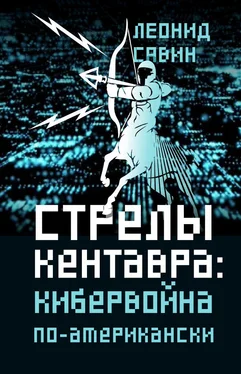Office of the Chief of Naval Operations, OPNAV Instruction 3430.26: Implementing Instrution for Information Warfare/Command and Control Warfare (IW/C2W). Washington, D.C.: Department of the Navy, 1995; United States Army Training and Doctrine Command, TRADOC Pamphlet 525-69: Military Operations Concept for Information Operations. См. также: David and McKel-din III (eds.), Ideas as Weapons: Influence and Perception in Modern Warfare. pp. 7-12 and pp. 27–34; Arquilla and Borer (eds.), Information Strategy and Warfare: A Guide to Theory and Practice. pp. 56-230; Macdonald, Propaganda and Information Warfare in the Twenty-First Century. pp. 6-117; Ventre, Information Warfare.; Hirvela, “Discovering how Information Warfare Distorts the Information Environment.”.; Cordray III and Romanych, “Mapping the Information Environment.
The Joint Chiefs of Staff, Joint Publication 3-13: Joint Doctrine for Information Operations. pp. I-9, I-10.
United States Department of Defense, Information Operations Roadmap. Washington, D.C.: Department of Defense, 2003; United States Marine Corps Combat Development Command, A Concept for Information Operations. Quantico: United States Marine Corps, 2002; The Joint Chiefs of Staff, Joint Publication 3-51: Joint Doctrine for Electronic Warfare. Washington, D.C.: The Joint Chiefs of Staff, 2000.
Navy Information Operations Command. NIOC Norfolk’s History, United States Navy. public.navy.mil/fcc-c10f/niocnorfolk/Pages/NIOCNorfolkHistory. aspx; United States Army Intelligence and Security Command, The INSCOM Story. INSCOM History Office. inscom.army.mil/organisation/History.aspx; 688th Cyberspace Wing, A Brief History of the 688th Cyberspace Wing. Joint Base San Antionio-Lackland: 688th Cyberspace Wing History Office, 2016.
The Joint Chiefs of Staff, Joint Publication 3-13: Information Operations. p. 3–14.
The Joint Chiefs of Staff, Joint Publication 3-13.1: Electronic Warfare. Washington, D.C.: The Joint Chiefs of Staff, 2007. pp. x-xi.
Field Manual 3-12: Cyberspace and Electronic Warfare Operations. Department of the Army, Washington, D.C. 05 February 2013.
U.S. reserves right to meet cyber attack with force. Nov 15, 2011. http:// www.reuters.com/article/2011/11/16/us-usa-defense-cybersecurity-idUSTRE-7AF02Y20111116
DoD Cyberspace Policy Report. Nov. 2011. p. 3. http://www.defense.gov/ home/features/2011/0411_cyberstrategy/docs/NDAA%20Section%20934%20 Report_For%20webpage.pdf
US launched cyber attacks on other nations. 24 January, 2012. http://rt.com/ usa/news/us-attacks-cyber-war-615/
The Joint Chiefs of Staff, Joint Vision 2020: America’s Military – Preparing for Tomorrow // Joint Force Quarterly 2000, 57–76. p. 61.
The Chairman of the Joint Chiefs of Staff, The National Military Strategy for Cyberspace Operations. Washington, DC: Office of the Chairman, 2006. p. 3.
Kuehl, Dan. From Cyberspace to Cyberpower: Defining the Problem, in Cyberpower and National Security, ed. Franklin D. Kramer, Stuart H. Starr, and Larry K. Wentz. Washington, DC: Potomac Books, 2009. p. 4.
Birdwell B., Mills R. War Fighting in Cyberspace. Evolving Force Presentation and Command and Control // Air Power. Spring 2011. p. 35.
Kissinger, Henry. World Order. Penguin Books Limited, 2014. p. 196.
Ibidem. p. 198.
Timcke, Scott. Capital, State, Empire: The New American Way of Digital Warfare. London: University of Westminster Press, 2017.
Lee, Robert M. The Interim Years of Cyberspace.// Air & Space Power Journal, January-February 2013. p. 58.
Birdwell B., Mills R. War Fighting in Cyberspace. Evolving Force Presentation and Command and Control. Air Power. Spring 2011. p. 4.
Nye, Joseph S. Jr. The Future of Power. New York: Public Affairs, 2011. p. 123.
Endsley, Mica R. Toward a Theory of Situation Awareness in Dynamic Systems, Human Factors 37, no. 1 (1995): 32–64.
Trias, Eric D. and Bell, Bryan M. Cyber This, Cyber That. . So What? // Air & Space Power Journal. Spring 2010. p. 91.
Allardice, Robert and Topic, George. Battlefield Geometry in our Digital Age. From Flash to Bang in 22 Milliseconds. PRISM 7, No. 2, 2017. p. 79.
Ibidem. p. 80.
Ibidem. p. 82.
The Joint Chiefs of Staff, Department of Defense Dictionary of Military and Associated Terms. Washington, D.C.: Joint Chiefs of Staff, 2017. p. 58.
Lee, Robert M. The Interim Years of Cyberspace // Air & Space Power Journal, January-February 2013. p. 63.
Trias, Eric D. and Bell, Bryan M. Cyber This, Cyber That. . So What? // Air & Space Power Journal. Spring 2010. p. 96–67.
Stewart, Kenneth. Cyber Security Hall of Famer Discusses Ethics of Cyber Warfare. America’s Navy, 6/4/2013. http://www.navy.mil/submit/display. asp?story_id=74613
Alfonso, Kristal L. M. A Cyber Proving Ground. The Search for Cyber Genius // Air & Space Power Journal. Spring 2010. p. 61
Ibidem. p. 64–66.
Arquilla J. Cyberwar Is Already Upon Us // Foreign Policy, March/April 2012. http://www.foreignpolicy.com/articles/2012/02/27/cyberwar_is_already_ upon_us
Trias, Eric D. and Bell, Bryan M. Cyber This, Cyber That. . So What? // Air & Space Power Journal. Spring 2010. p. 91.
Ibidem. pp. 92–97.
Reed, Thomas C. At the Abyss: An Insider’s History of the Cold War. NY: Random House, 2004. https://archive.org/details/atabyssinsidersh00reed
Sebenius, Alyza. Writing the Rules of Cyberwar // The Atlantic, June 28, 2017.
https://www.theatlantic.com/international/archive/2017/06/cyberattack-rus-sia-ukraine-hack/531957/
Hersh, Seymour. The Online Threat. Should we be worried about a cyber war? // The New Yorker, November 1, 2010. http://www.newyorker.com/report-ing/2010/11/01/101101fa_fact_hersh?currentPage=all
Cyber Leaders: A Discussion with the Honorable Eric Rosenbach, panel discussion, Center for Strategic and International Studies, Washington, DC, October 2, 2014. http://csis.org/event/cyber-leaders.
Shachtman N. Military Networks ‘Not Defensible,’ Says General Who Defends Them. January 12, 2012. http://www.wired.com/dangerroom/2012/01/ nsa-cant-defend/
A New Information Paradigm? From Genes to “Big Data” and Instagram to Persistent Surveillance…Implications for National Security. 8th Annual Strategic Multi-Layer Assessment (SMA) Conference, Joint Base Andrews, 28–29 October 2014.
Стратегическая многоуровневая оценка (Strategic Multi-Layer Assessment, SMA) – обеспечивает поддержку планирования командам со сложными эксплуатационными императивами, требующими мультидисциплинарных и межведомственных решений, которые не входят в компетенцию службы / агентства. Решения и участники запрашиваются в правительстве США и других структурах. SMA принимается и синхронизируется Объединенным командованием.
Читать дальше












